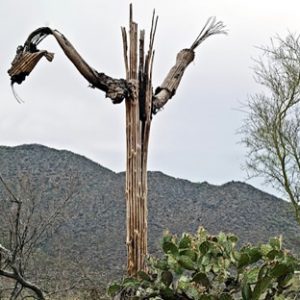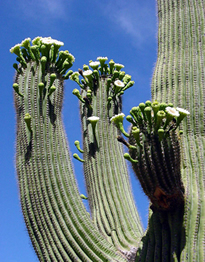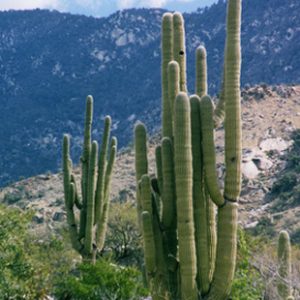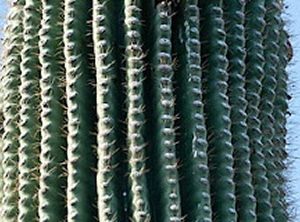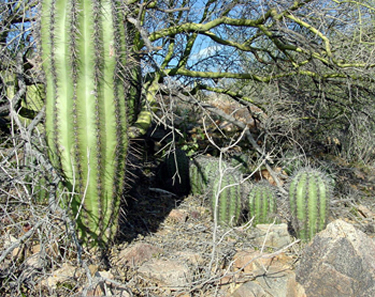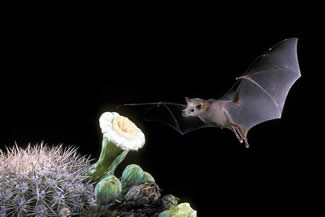Arizona State Flower
Carnegiea gigantea
Carnegiea gigantea (aka Saguaro) is the keystone plant and icon of the Sonoran Desert. This slow growing columnar cactus is this country’s largest cactus, often reaching between 40 and 60 feet in height and weighing (when fully hydrated) approximately 80lbs per foot. A mature Saguaro may weigh as much as 8 tons. They can live for more than 200 years.
The plant’s epidermis (skin) is ‘pleated’, allowing for expansion when water is available, and contraction during droughts. The plant’s thick skin is waxy and waterproof, restricting water loss only through the stomates (gas exchanging pores).
The plant is supported by an internal skeleton, a circle of woody ribs extending the length of the cactus and into its arms.
Saguaro arms always grow upward; frost may damage the tissue such that the weight of the arm causes it to droop downward. If the arm survives, the growing tip will turn upward again.
Flowers are formed on the growing tips, and following pollination, fruits will form, each containing approximately 2000 seeds. Dispersal, rainfall, and other factors result in only about one mature plant per 40 million seeds.
The waxy, white, 3 inch wide blossom is Arizona’s State Flower. The bloom opens at night and is pollinated by both the Mexican long-tongued and the lesser long-nosed bat. Flowers stay open until the next afternoon, attracting birds and insects to consume nectar and pollen while also providing pollination services.
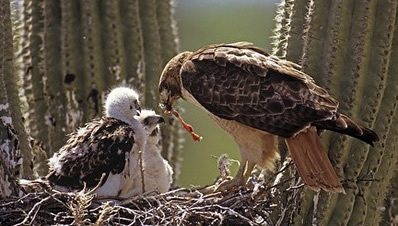
Hawks, such as red-tail hawks, and doves construct thick nests on the arms, while Gila woodpeckers and Gilded flickers excavate holes for nesting sites into the Saguaro’s stem.
In defense the cactus quickly produces a thick material to heal and dry the wound. This ‘callus’ structure usually takes the shape of a ‘boot’. When the plant dies the woody ribs that supported it in life and any ‘boots’ soon become visible as the softer plant tissue dries and crumbles away.
Saguaros, being only found in the Sonoran desert, and most abundant in the Arizona Uplands subdivision on south-facing slopes are sensitive to extremes in cold and dry weather. Plants grow from sea level to 4000′, primarily in southern Arizona and western Sonora, Mexico.



